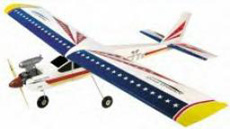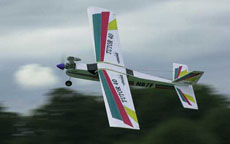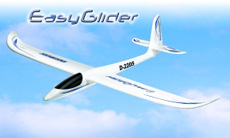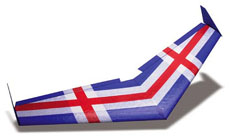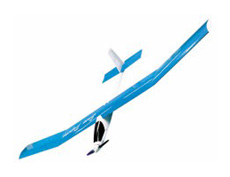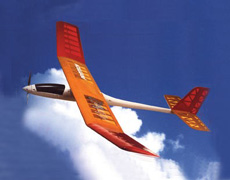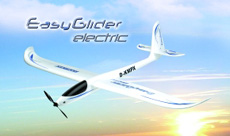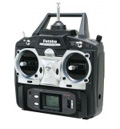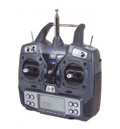
|
|
| Getting Started? Here's Some Useful Advice | |||||||||||||||||||||||||||||||||||||
|
By
Terry Sullivan The purpose of this article is to put together the advice that has been written many, many times on the FS Forum for people starting in model flying, to save the regulars from repeating themselves again and again. Join
A Club Joining a club is the first step, and personally I would never suggest to anyone that they learn to fly without help. For a start, setting up a model to fly properly is not always straightforward, so having an experienced flier around to test fly it is sensible. Insurance Model flying can be dangerous. Proper training is vital to the safety of you and to others, and in many areas that the uninitiated would not suspect. For example, there are cheap models available on the High Street, some of which are equipped with radios, which operate on the same frequency as toy model cars and boats. So if you use one of these, you risk interference from a kid with his toy car! Without being taught these things, most people would remain unaware. My own club has negotiated deals with several local model shops and this gives us a 10% discount on every purchase. If the club you join has a similar deal, you will actually save money by joining. Training
& Instruction The usual training method used today is a dual control system using 2 transmitters linked by a cable. This is sometimes referred to as the 'Buddy Box' system. The instructor has the master transmitter. He has a "dead man's switch" which he has to hold whilst the pupil flies. By releasing the switch, instantly the instructor has control back. This saves passing the transmitter from hand-to-hand, reaching round the pupil and other means that are less satisfactory. Normally if a pupil has lost control, by the time he has passed the Transmitter over to the instructor it is too late! To use this system, the transmitters must be compatible. Modern Futaba and Hitec systems work together with the right buddy lead, but JR will not. I do not know about other makes. There are also different ways in which the controls are arranged on the transmitter, called Modes. Mode 1 and 2 (click here for an explanation of Modes) make up 99.9% of transmitters, and having a transmitter on the same mode as your instructor means he can test fly your model, and also makes instruction easier. Another advantage of joining a club is that there are many different types of model flying, and a club will give you an opportunity to see several. If they are a single discipline club, that is they fly only fixed wing aircraft, or perhaps only gliders or helicopters, they will probably know where other types of flying are to be found. My own club is part of a federation of model flying clubs in the county, so if a member wants to see a branch of flying we do not do, he can see it at another club. We mostly do fixed wing gliding and electric flying, but there are Internal Combustion and helicopter sites around for those who would like to try this. Club
Instructors But normally an instructor will be able to tell quite soon how well you will do, and this is one factor in what model he would advise you to get. He will also know the conditions where you will fly and the type of model best suited to those conditions. An example of this is my own regular site. We fly a type of glider that depends on the wind blowing upwards from the sea up a cliff, a type of flying called slope soaring. This is fine when you have a smooth slope, but ours has a vertical face at the top, about 15-20 feet. This causes an effect called 'curl over', where the air curls like a surf wave over the edge (you must have seen films of surfers going through a "tunnel" of water). As a result, we get a lot of turbulence in the landing area and so I often recommend as a first model a flying wing made of foam, a very tough model that bounces well. I have even seen one survive a car being driven over it! When you have to land in severe turbulence, this durability is very useful! But
having said that your instructor should have the last word, but
here are a few ideas for you to be looking at.
Common
Abbreviations and Terms Please remember that in the UK part of the 35Mhz waveband is reserved solely for the use of r/c model aircraft. See here for Channel numbers and there respective frequencies. Find out your club's system of frequency control, usually a pegboard system. And never switch on your radio equipment before checking if one else is already using the same channel number/frequency. Please
do not confuse Frequency Channels with the number of Channels i.e.
functions your radio can control. A four channel radio will control
four seperate controls. Elevator, ailerons, rudder and throttle.
See an explanation here. Also read
an explaination of radio terms here. Suggested
Web Links www.bmfa.org
www.flyingsites.co.uk/links www.xcweather.co.uk www.servoshop.co.uk I hope this helps you as you start to get involved in model flying. Please read up as much as you can and keep asking questions before committing you 'pride & joy' to the air. Everyone has started at sometime and asked all the same questions that you may now find you need an answer to. You never stop learning in this hobby! After being involved in many different activities over the years, for me model flying is the best hobby there is. I have made some excellent friends, learnt an awful lot, and enjoy every time I go flying. Some final pieces of advice - commitment is vital, going to the site once a month with poor equipment is no good at all. Once you have found that you want to fly model planes, buy the best equipment you can afford and spend as much time as you can at it. The more time you spend flying the faster you will learn. Secondly, never be afraid to ask questions, either on the forum here, or at your club. If you do not understand, ask. The chances are that your instructor will have had the same question many times, and may well have asked it himself in his early days. But he is not telepathic, he cannot tell if you do not know something you should, or have misunderstood what he has said. If you are not sure, ask! Finally... If you are not prepared for the occasional mishap, maybe model flying is not for you. But by following some of the advice given here we hope that the occasional mishap will be very rare. I learned this the hard way, I hope you don't! Happy
Landings, |
|||||||||||||||||||||||||||||||||||||
|
|
|||||||||||||||||||||||||||||||||||||
